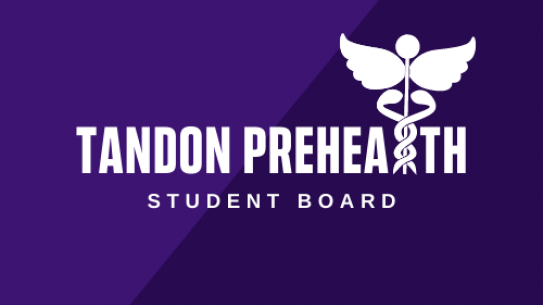Engineering a career in healthcare

Participants in the Yoga and Science conference that attracted more than 400 participants from around the region to the NYU Tandon School of Engineering, among them Deepak Chopra.
No student at NYU Tandon needs to be convinced about the value of an engineering degree. For anyone wanting a career as a cybersecurity specialist, designer of transportation systems, roboticist, or a plethora of other jobs, engineering school is the natural first step.
But what about doctor, dentist, veterinarian, nurse, pharmacist, or physical therapist?
Alexandra Seidenstein, faculty member in Tandon’s Department of Chemical and Biomolecular Engineering, and Sara-Lee Ramsawak, director of Academics and Global Programs, believe that engineering can provide an enriching and effective pathway to those fields as well, and as organizers of Tandon’s burgeoning prehealth track, they are presenting possibilities that most students might never before have considered.
“Engineering is now increasingly being considered a great foundational course of study in many other areas,” they explain. “Engineers are trained to be logical and creative problem-solvers, and the skills they gain can serve them well almost anywhere.” That can be especially true of the medical profession. “Engineers are generally focused on doing research and creating technology that benefits society, so they exhibit the high levels of social awareness and civic responsibility required of medical professionals,” the pair asserts.
In Tandon’s Prehealth Prep course, students considering a pivot to medicine learn about the entire medical school application process and are given individual advisement and guidance that can help them compete with students who’ve taken more conventional pre-med courses.
“Medical schools often look closely at an applicant’s extracurricular activities,” Ramsawak and Seidenstein explain. “Often that includes things like clinical experience or volunteer work.” In order to provide Tandon students with relevant experiences, the pair continually plan a variety of educational (and application-boosting) events.
Open wide and say “om”
Earlier this year, Seidenstein and Ramsawak spearheaded a Yoga and Science conference that attracted more than 400 participants from around the region to the NYU Tandon School of Engineering, among them Board of Overseers Chair Chandrika Tandon, who opened the event with a welcoming address.
Speaker and co-organizer Marshall Hagins — a professor emeritus in the Department of Physical Therapy at Long Island University and a senior clinical researcher at the Harkness Center for Dance Injuries — discussed the reasoning behind a medical conference focused on yoga. He explained that willow leaves (a precursor of aspirin) were used by Sumerians and Egyptians 5,000 years ago as an anti-inflammatory and pain reliever, but it was not until the 1970s that researchers could describe the exact anti-inflammatory mechanism. Similarly, while yoga has been practiced for millennia, it was not until recently that scientists began to examine how and why it works.
Although the conference featured such high-wattage celebrity figures as Deepak Chopra, anyone expecting Oprah-friendly presentations on lightweight topics might have been disappointed. Chopra’s talk was entitled “The Neuroscience of Self-Awareness and Higher Consciousness,” while other presentations included “Physiological Effects of Voluntarily Regulated Yoga Breathing and Yoga Meditation” (by Shirley Telles, the director of India’s Patanjali Research Foundation) and “Know the NCCIH and the Science” (by Pam Jeter, the scientific review officer of the National Center for Complementary and Integrative Health).

Among the undisputed highlights of the event was the presentation of a generous NYU-Tandon PreHealth Scholarship, which was awarded to Francesca Santacroce, who is majoring in biomolecular science and intends to go on to medical school. In her award-winning essay, she had written: “I hope in my lifetime and professional career that I can aid in the engineering of the bridge between yoga and translational medicine by educating patients and fostering their trust in medicine and scientific research.”
Intel from the trenches
Recently, Nora Douglas, a third-year medical student from the Howard University College of Medicine, came to Brooklyn to address Tandon students on the prehealth track. While she herself had followed a more conventional path, earning undergraduate and master’s degrees in public health, biochemistry, and molecular biology before entering med school, she was encouraging to the engineers in attendance, offering plenty of firsthand wisdom and practical advice. “Medical students and doctors are not necessarily the smartest people in the room, but they are always the ones who never gave up,” she asserted.
Spring Break Service
Seidenstein and Ramsawak, veterans of organizing alternative spring break trips, are planning to travel this year with students on the prehealth track to Treasure Beach, on Jamaica's south coast. There they’ll have a chance to work directly with residents, provide frontline care at a local medical clinic, and improve health outcomes in the close-knit fishing village.





